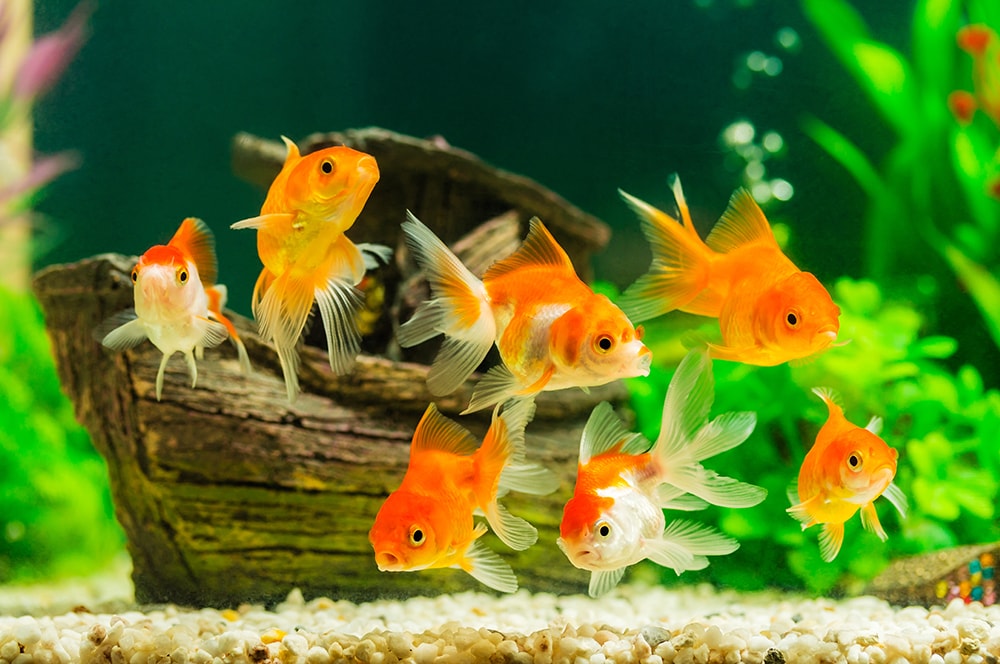Why Does My Fish Keep Swimming to the Top?
As a devoted fish enthusiast, I’ve had my fair share of puzzling fish behavior. One such behavior that has perplexed me and many other fish keepers is the sight of our beloved aquatic companions repeatedly swimming to the surface. While it can be a cause for concern, understanding the potential reasons behind this behavior can help us provide the best possible care for our finned friends.
Before we delve into the specific causes, it’s essential to note that fish swimming to the top of the tank is not always a sign of distress. Some fish, such as bettas and gouramis, have a natural tendency to gulp air from the surface due to their labyrinth organs, which allow them to breathe atmospheric oxygen. However, if your fish is exhibiting this behavior excessively or suddenly changes its swimming pattern, it could indicate an underlying issue that requires attention.
Water Quality Issues
One of the most common reasons why fish swim to the top of the tank is poor water quality. Fish rely on dissolved oxygen in the water to breathe. When oxygen levels are low, they may rise to the surface to access more oxygen-rich air. Factors such as overcrowding, overfeeding, lack of filtration, and infrequent water changes can all contribute to low oxygen levels.
To address this issue, ensure regular water changes (at least 25% of the tank volume weekly), use an appropriate filtration system, and avoid overstocking the tank. Additionally, aerating the water with an air stone or filter can significantly increase oxygen levels.
Respiratory Problems
Respiratory problems can also lead to fish swimming to the surface for air. Parasites, infections, and gill damage can all impair oxygen uptake, forcing fish to seek additional sources of oxygen.
If you suspect respiratory problems, observe your fish closely for signs of distress, such as gasping at the surface, rapid gill movement, or discharge from the gills. Consult with a veterinarian for proper diagnosis and treatment.
Stress or Fear
Stress can manifest in various ways in fish, including swimming to the top of the tank. If your fish is new to the environment, has been recently introduced to new tankmates, or is experiencing any form of stress, it may attempt to escape by swimming to the surface.
Providing a stable, stress-free environment is crucial. Ensure the tank size is adequate for the number of fish, provide plenty of hiding spots and plants, and avoid sudden changes to the water parameters or tank decor.
Disease or Injury
In some cases, fish swimming to the top of the tank may be a symptom of an underlying disease or injury. Swim bladder problems, fungal infections, and buoyancy issues can all affect a fish’s ability to maintain its position in the water column.
If you suspect a medical issue, consult with a veterinarian as soon as possible. Early diagnosis and treatment can improve the chances of a successful recovery.
Insufficient Water Flow or Circulation
Inadequate water flow or circulation can also cause fish to swim to the top of the tank. Stagnant water lacks oxygen circulation, leading fish to seek areas with better oxygen availability.
Ensure proper water flow by using a filter and adjusting its output. You can also add an air stone to increase surface agitation and oxygen exchange.
Tips and Expert Advice
Based on my experience and insights from expert sources, here are some additional tips to address fish swimming to the top of the tank:
- Test your water parameters regularly to ensure optimal pH, ammonia, nitrite, and nitrate levels.
- Avoid overcrowding the tank and maintain a suitable fish-to-gallon ratio for your tank size.
- Provide hiding spots and plants to reduce stress and create a feeling of security.
- Acclimate new fish gradually to minimize stress during introduction.
- Quarantine new fish before adding them to the main tank to prevent the spread of disease.
It’s important to note that if your fish continues to swim to the top of the tank despite implementing these measures, it’s crucial to seek professional advice. A veterinarian can conduct a thorough examination, diagnose any underlying medical conditions, and recommend appropriate treatment options.
FAQs
Q: Is it normal for fish to swim to the top of the tank occasionally?
A: Yes, some fish species, such as bettas and gouramis, have a natural tendency to gulp air from the surface. However, excessive or sudden changes in swimming behavior may indicate an underlying issue.
Q: How often should I change my tank water?
A: Regular water changes are essential for maintaining water quality. Aim to change at least 25% of the tank volume weekly or more frequently if necessary.
Q: What are the signs of respiratory distress in fish?
A: Signs of respiratory distress include gasping at the surface, rapid gill movement, flaring of the gills, and discharge from the gills.
Q: How can I reduce stress in my fish tank?
A: Provide hiding spots and plants, avoid overcrowding, and ensure a stable environment with consistent water parameters. Avoid sudden changes or disturbances to the tank.
Q: Is it always an emergency when my fish swims to the top of the tank?
A: Not always. However, if the behavior is excessive, sudden, or accompanied by other symptoms, it’s vital to investigate the potential cause and seek professional advice if necessary.
Conclusion
Understanding the reasons why your fish swims to the top of the tank is essential for providing optimal care and ensuring the well-being of your aquatic companions. By addressing water quality issues, respiratory problems, stress, and other potential causes, you can create a healthy and thriving environment for your fish. If the issue persists or you suspect a medical condition, don’t hesitate to consult with a veterinarian for further assistance.

Image: cdc.gov

Image: petlandiowacity.com
Why Are My Fish Hiding Now? | Knisley’s Pet & Farm Center Water Temperature Is Too High. Another reason why the fish may be swimming toward the top of the tank is that the temperature of your water change was far too warm. It’s imperative that you ensure the water is at room temperature. This is because any temperature above 68°F to 70°F will reduce any oxygen molecules present.